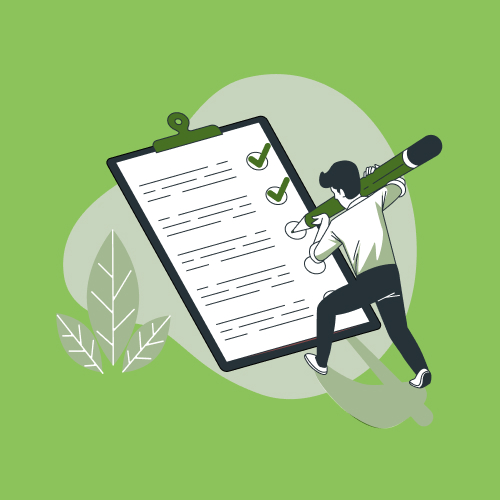HR data privacy encompasses the policies, processes, and technology controls that govern how organisations collect, store, use and share personal information about employees.
As global privacy regulations multiply and employees grow more aware of their rights, adopting robust HR data privacy best practices is both a compliance imperative and a strategic advantage.
Organisations face rising regulatory pressure—from the EU’s GDPR to California’s CPRA and Brazil’s LGPD—and evolving local labour laws. Employees expect transparency, control over their data and assurance that their sensitive details remain protected.
Common HR data risks include unauthorised access to personnel records, misuse of background-check information, insufficient retention and deletion practices, and non-compliance that can lead to fines or reputational harm.
This guide presents a step-by-step implementation framework. You will learn how to assemble a privacy team, conduct risk assessments, craft policies, deploy technical safeguards, manage consent, train staff, respond to incidents, audit continuously, navigate global laws and embed an ethical data culture.
Key takeaways
- Roll out a multi-phase privacy program: assess, policy, controls, training and audit.
- Adopt encryption, role-based access controls, automated audit trails and AI-driven reporting.
- Embed consent management, self-service data rights and an incident response plan.
- Stay compliant with GDPR, CCPA/CPRA, LGPD and emerging data protection requirements for employers.
Essential steps to roll out an HR data privacy program

Implementing a successful HR data privacy program requires coordinated efforts across departments. Follow these six phases:
- Phase 1: Assemble a cross-functional privacy team – Include HR, Legal, and IT. Compliance leads to ensure diverse expertise and clear ownership.
- Phase 2: Map data flows – Document how employee data is collected, stored, processed and deleted across systems (payroll, talent management, benefits, background checks).
- Phase 3: Define program scope – Identify covered data types (personal identifiers, health, financial) and employee lifecycle stages (recruitment, onboarding, performance, offboarding).
- Phase 4: Develop a project plan – Set milestones, assign responsibilities and secure executive sponsorship to drive progress.
- Phase 5: Launch a pilot – Test controls in one department or region, gather feedback on policy clarity and technology usability.
- Phase 6: Scale rollout – Communicate successes, update training materials and expand controls enterprise-wide.
Throughout each phase, track progress against your compliance checklist and adjust based on stakeholder input. Early wins in a pilot help build momentum and demonstrate value to the broader organisation.
Conducting an HR data privacy risk assessment
A comprehensive risk assessment helps prioritise controls and allocate resources effectively. Use this five-step approach:
- Inventory systems and classify data – Identify all HR platforms and label data by sensitivity (e.g., PII, health, financial).
- Identify threats – Consider unauthorised external access, insider misuse and vendor or third-party risks.
- Assess likelihood and impact – Use a risk matrix (low, medium, high) to quantify potential incidents and their business consequences.
- Document findings – Create a risk register detailing each threat, current controls and residual risk rating.
- Prioritise remediation – Focus on high-impact, high-likelihood risks first, such as unencrypted data at rest in payroll systems.
Leverage MiHCM Analytics for automated data flow visualisation, enabling real-time insights into where sensitive records reside and which users have access. This aids in continuously monitoring and updating your risk profile.
Crafting an HR data privacy policy

Your HR data privacy policy serves as the foundation for consistent practices. Include these elements:
- Objectives and scope – Define the policy’s purpose, covered employee categories and data types.
- Legal basis – Reference applicable laws (GDPR, CCPA/CPRA, LGPD) and any local labor regulations.
- Data retention and deletion – Specify retention periods; document archival and secure disposal processes.
- Roles and responsibilities – Assign accountability to HR, IT, Data Protection Officer and other stakeholders.
- Employee acknowledgment – Require sign-off on the policy during onboarding via self-service portals.
Technical safeguards for HR data privacy: Encryption, access controls and monitoring
Technical controls form the backbone of HR data protection. Key measures include:
- Encryption at rest and in transit – Use AES-256 for databases and TLS 1.2+ for network communications.
- Role-based access control (RBAC) – Enforce least-privilege access to HR systems and data.
- Automated audit trails – Log every HR action (record creation, updates, deletions) for forensic analysis.
- Real-time monitoring – Deploy anomaly detection to surface unusual access patterns.
- SmartAssist-driven compliance reporting – Generate on-demand dashboards and evidence packages for audits.
Product Features:
- Role-based access control and encryption
- Automated HR approval workflows with audit trails
- SmartAssist-driven compliance reporting
Benefits:
- Reduces internal misuse with strict access governance
- Speeds audit preparation with on-demand reporting
- Strengthens data security posture against breaches
Consent management and employee data rights
Consent and data subject rights are central to global privacy laws. Implement:
- Consent mapping – Document which data processing activities require consent under GDPR or opt-out notices under CCPA/CPRA.
- Consent capture and withdrawal – Provide clear, granular checkboxes in HR portals and allow easy revocation.
- Self-service portals – Enable employees to view, correct or delete their data, and to download data portability packages.
- Consent recordkeeping – Log timestamps, versioning and purpose for each consent.
- Special-category data – Apply additional safeguards for health, biometrics and background-check information.
Training employees on privacy protocols and maintaining awareness

Effective training ensures consistent application of data privacy practices:
- Role-based modules – Tailor content for HR teams, managers and general staff to address relevant scenarios.
- Simulations and scenarios – Conduct phishing drills and hands-on data handling exercises.
- MiA micro-learning – Deliver short, interactive lessons and quizzes embedded in daily workflows.
- Quarterly refreshers – Schedule periodic updates to reinforce key policies and new regulatory changes.
- Effectiveness metrics – Track completion rates, assessment scores and incident reports to measure learning outcomes.
Incident response plan and breach notification procedures
A well-defined incident response plan limits damage and supports regulatory compliance:
- Incident categorisation – Define severity levels (low, medium, high) based on data sensitivity and scope.
- Escalation paths – Identify cross-functional response teams: HR, IT security, legal and communications.
- Notification timelines – Comply with GDPR (72 hours), CPRA (45 days) and LGPD (within a reasonable time).
- Automated alerts – Use templated workflows to notify impacted employees, regulators and third parties.
- Post-incident review – Conduct root-cause analysis, update policies and retrain staff as needed.
Ongoing audits, metrics and continuous improvement
Maintain program effectiveness through regular evaluation:
- Audit schedules – Plan annual comprehensive audits and ad-hoc checks after major changes.
- Key performance indicators – Monitor incident rates, average response times and audit findings.
- Analytics dashboards – Leverage MiHCM Analytics to visualise compliance health and control gaps.
- Iterative controls – Refine policies and technical safeguards based on audit insights.
- Executive reporting – Share concise reports with leadership to secure ongoing resources and accountability.
HR data privacy laws: Global and local requirements
HR data handling obligations vary by jurisdiction. Key laws include:
| Law | Scope | Key Requirements | HR Data Coverage |
|---|---|---|---|
| GDPR | EU/EEA | Consent, DPIAs, breach notifications | Full |
| CCPA/CPRA | California, US | Access, deletion, opt-out | Full for CPRA, partial for CCPA |
| LGPD | Brazil | Purpose limitation, data minimisation | Full |
| PDPA | Singapore | Consent, breach reporting, fines up to SGD 1M | Partial |
| Various State Laws | US States | Access, correction, deletion | Exempt HR except CPRA |
Cross-border transfers require standard contractual clauses or adequacy decisions. Use MiHCM Lite’s localised templates to align with labour law provisions and rapidly update policies across regions.
Ethical considerations in HR data management
Beyond compliance, ethical data practices foster trust and fairness:
- Fairness and transparency – Clearly communicate data uses and avoid opaque profiling or automated decisions without human oversight.
- Purpose limitation – Collect data only for stated HR objectives such as performance reviews or benefits administration.
- Bias mitigation – Regularly audit AI-driven analytics for disparate impacts on protected groups.
- Trust-building – Limit monitoring to work-related activities and respect employee autonomy.
- Governance – Embed ethics reviews in policy updates and committee oversight.
Next steps
Implementing robust HR data privacy best practices requires a blend of policy, process and technology. Key takeaways include conducting risk assessments, crafting clear policies, deploying encryption and role-based controls, managing consent, training employees, establishing incident response plans and auditing continuously.
Schedule a demo of MiHCM Data & AI and SmartAssist to see how our integrated suite can operationalise privacy controls across your HR workflows. Commit to ongoing reviews and ethical stewardship to maintain trust and resilience in an evolving regulatory landscape.



